From our NY Datacenter, transfers to locations that are farther away are having poor performance.
Using speed test to test various locations, we can saturate our 100 mbit uplink to Boston and Philadelphia easily. When I use speed test to location on the west coast of the US or Europe, I often see only about 9 mbit/s.
My first reaction is that this is a window scaling problem (Bandwidth Delay Product). However, I have adjusted with Linux kernel parameters on a test machine on the west coast and used iperf to the point where the Window is sizing to enough to support 100 MegaBytes a second and still have slow speeds (Verified in Capture). I have also tried disabling the Nagle algorithm.
We get poor performance from Both Linux and Windows, but it is significantly worse (1/3rd) the speed using Windows.
The shape of the transfer (without Nagle) is: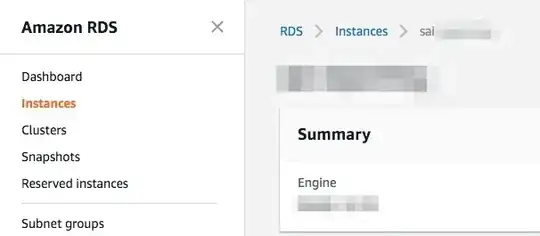
The Dip around 10s has ~100 duplicate acks.
The Shape of the Min Window size of the receiver over time is:
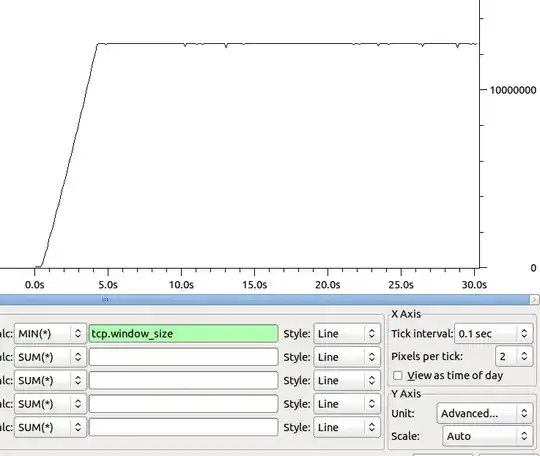
Any ideas on where to go next to pin down our bottle neck?
Some Speed test results (Upload using speedtest.net):
- Philadelphia: 44 mbit (People using our site are using the rest ;-) )
- Miami: 15 mbit
- Dallas: 14 mbit
- San Jose: 9 mbit
- Berlin: 5 mbit
- Sydney: 2.9 mbit
Even More Data:
Miami:
69.241.6.18
2 stackoverflow-nyc-gw.peer1.net (64.34.41.57) 0.579 ms 0.588 ms 0.594 ms
3 gig4-0.nyc-gsr-d.peer1.net (216.187.123.6) 0.562 ms 0.569 ms 0.565 ms
4 xe-7-2-0.edge1.newyork1.level3.net (4.78.132.65) 0.634 ms 0.640 ms 0.637 ms
5 vlan79.csw2.newyork1.level3.net (4.68.16.126) 4.120 ms 4.126 ms vlan89.csw3.newyork1.level3.net (4.68.16.190) 0.673 ms
6 ae-81-81.ebr1.newyork1.level3.net (4.69.134.73) 1.236 ms ae-91-91.ebr1.newyork1.level3.net (4.69.134.77) 0.956 ms ae-81-81.ebr1.newyork1.level3.net (4.69.134.73) 0.600 ms
7 ae-10-10.ebr2.washington12.level3.net (4.69.148.50) 6.059 ms 6.029 ms 6.661 ms
8 ae-1-100.ebr1.washington12.level3.net (4.69.143.213) 6.084 ms 6.056 ms 6.065 ms
9 ae-6-6.ebr1.atlanta2.level3.net (4.69.148.105) 17.810 ms 17.818 ms 17.972 ms
10 ae-1-100.ebr2.atlanta2.level3.net (4.69.132.34) 18.014 ms 18.022 ms 18.661 ms
11 ae-2-2.ebr2.miami1.level3.net (4.69.140.141) 40.351 ms 40.346 ms 40.321 ms
12 ae-2-52.edge2.miami1.level3.net (4.69.138.102) 31.922 ms 31.632 ms 31.628 ms
13 comcast-ip.edge2.miami1.level3.net (63.209.150.98) 32.305 ms 32.293 ms comcast-ip.edge2.miami1.level3.net (64.156.8.10) 32.580 ms
14 pos-0-13-0-0-ar03.northdade.fl.pompano.comcast.net (68.86.90.230) 32.172 ms 32.279 ms 32.276 ms
15 te-8-4-ur01.northdade.fl.pompano.comcast.net (68.85.127.130) 32.244 ms 32.539 ms 32.148 ms
16 te-8-1-ur02.northdade.fl.pompano.comcast.net (68.86.165.42) 32.478 ms 32.456 ms 32.459 ms
17 te-9-3-ur05.northdade.fl.pompano.comcast.net (68.86.165.46) 32.409 ms 32.390 ms 32.544 ms
18 te-5-3-ur01.pompanobeach.fl.pompano.comcast.net (68.86.165.198) 33.938 ms 33.775 ms 34.430 ms
19 te-5-3-ur01.pompanobeach.fl.pompano.comcast.net (68.86.165.198) 32.896 ms !X * *
69.241.6.0/23 *[BGP/170] 1d 00:55:07, MED 3241, localpref 61, from 216.187.115.12
AS path: 3356 7922 7922 7922 20214 I
> to 216.187.115.166 via xe-0/0/0.0
San Jose: 208.79.45.81
2 stackoverflow-nyc-gw.peer1.net (64.34.41.57) 0.477 ms 0.549 ms 0.547 ms
3 gig4-0.nyc-gsr-d.peer1.net (216.187.123.6) 0.543 ms 0.586 ms 0.636 ms
4 xe-7-2-0.edge1.newyork1.level3.net (4.78.132.65) 0.518 ms 0.569 ms 0.566 ms
5 vlan89.csw3.newyork1.level3.net (4.68.16.190) 0.620 ms vlan99.csw4.newyork1.level3.net (4.68.16.254) 9.275 ms vlan89.csw3.newyork1.level3.net (4.68.16.190) 0.759 ms
6 ae-62-62.ebr2.newyork1.level3.net (4.69.148.33) 1.848 ms 1.189 ms ae-82-82.ebr2.newyork1.level3.net (4.69.148.41) 1.011 ms
7 ae-2-2.ebr4.sanjose1.level3.net (4.69.135.185) 69.942 ms 68.918 ms 69.451 ms
8 ae-81-81.csw3.sanjose1.level3.net (4.69.153.10) 69.281 ms ae-91-91.csw4.sanjose1.level3.net (4.69.153.14) 69.147 ms ae-81-81.csw3.sanjose1.level3.net (4.69.153.10) 69.495 ms
9 ae-23-70.car3.sanjose1.level3.net (4.69.152.69) 69.863 ms ae-13-60.car3.sanjose1.level3.net (4.69.152.5) 69.860 ms ae-43-90.car3.sanjose1.level3.net (4.69.152.197) 69.661 ms
10 smugmug-inc.car3.sanjose1.level3.net (4.71.112.10) 73.298 ms 73.290 ms 73.274 ms
11 speedtest.smugmug.net (208.79.45.81) 70.055 ms 70.038 ms 70.205 ms
208.79.44.0/22 *[BGP/170] 4w0d 08:03:46, MED 0, localpref 59, from 216.187.115.12
AS path: 3356 11266 I
> to 216.187.115.166 via xe-0/0/0.0
Philly: 68.87.64.49
2 stackoverflow-nyc-gw.peer1.net (64.34.41.57) 0.578 ms 0.576 ms 0.570 ms
3 gig4-0.nyc-gsr-d.peer1.net (216.187.123.6) 0.615 ms 0.613 ms 0.602 ms
4 xe-7-2-0.edge1.newyork1.level3.net (4.78.132.65) 0.584 ms 0.580 ms 0.574 ms
5 vlan79.csw2.newyork1.level3.net (4.68.16.126) 0.817 ms vlan69.csw1.newyork1.level3.net (4.68.16.62) 9.518 ms vlan89.csw3.newyork1.level3.net (4.68.16.190) 9.712 ms
6 ae-91-91.ebr1.newyork1.level3.net (4.69.134.77) 0.939 ms ae-61-61.ebr1.newyork1.level3.net (4.69.134.65) 1.064 ms ae-81-81.ebr1.newyork1.level3.net (4.69.134.73) 1.075 ms
7 ae-6-6.ebr2.newyork2.level3.net (4.69.141.22) 0.941 ms 1.298 ms 0.907 ms
8 * * *
9 comcast-ip.edge1.newyork2.level3.net (4.71.186.14) 3.187 ms comcast-ip.edge1.newyork2.level3.net (4.71.186.34) 2.036 ms comcast-ip.edge1.newyork2.level3.net (4.71.186.2) 2.682 ms
10 te-4-3-ar01.philadelphia.pa.bo.comcast.net (68.86.91.162) 3.507 ms 3.716 ms 3.716 ms
11 te-9-4-ar01.ndceast.pa.bo.comcast.net (68.86.228.2) 7.700 ms 7.884 ms 7.727 ms
12 te-4-1-ur03.ndceast.pa.bo.comcast.net (68.86.134.29) 8.378 ms 8.185 ms 9.040 ms
68.80.0.0/13 *[BGP/170] 4w0d 08:48:29, MED 200, localpref 61, from 216.187.115.12
AS path: 3356 7922 7922 7922 I
> to 216.187.115.166 via xe-0/0/0.0
Berlin: 194.29.226.25
2 stackoverflow-nyc-gw.peer1.net (64.34.41.57) 0.483 ms 0.480 ms 0.537 ms
3 oc48-po2-0.nyc-telx-dis-2.peer1.net (216.187.115.133) 0.532 ms 0.535 ms 0.530 ms
4 oc48-so2-0-0.ldn-teleh-dis-1.peer1.net (216.187.115.226) 68.550 ms 68.614 ms 68.610 ms
5 linx1.lon-2.uk.lambdanet.net (195.66.224.99) 81.481 ms 81.463 ms 81.737 ms
6 dus-1-pos700.de.lambdanet.net (82.197.136.17) 80.767 ms 81.179 ms 80.671 ms
7 han-1-eth020.de.lambdanet.net (217.71.96.77) 97.164 ms 97.288 ms 97.270 ms
8 ber-1-eth020.de.lambdanet.net (217.71.96.153) 89.488 ms 89.462 ms 89.477 ms
9 ipb-ber.de.lambdanet.net (217.71.97.82) 104.328 ms 104.178 ms 104.176 ms
10 vl506.cs22.b1.ipberlin.com (91.102.8.4) 90.556 ms 90.564 ms 90.553 ms
11 cic.ipb.de (194.29.226.25) 90.098 ms 90.233 ms 90.106 ms
194.29.224.0/19 *[BGP/170] 3d 23:14:47, MED 0, localpref 69, from 216.187.115.15
AS path: 13237 20647 I
> to 216.187.115.182 via xe-0/1/0.999
Update:
Digging into this a little bit deeper with Tall Jeff we have found something strange. According to the TCPDump on the sender's side it send the packets as 65k packets over the Internet. When we look at the dumps on the receiver side they arrive fragmented 1448 as you would expect.
Here is what the packet dump looks like on the Sender side: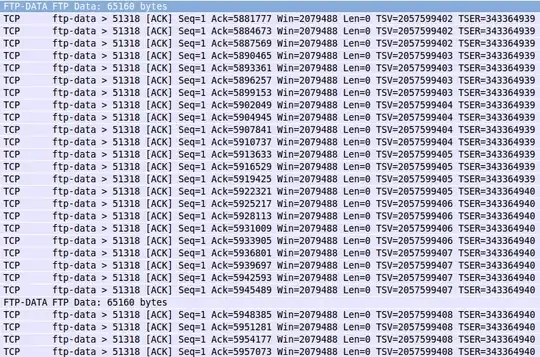
What happens then is that the sender thinks it is just sending 64k packets, but in reality as far as the receiver is concerned it is sending bursts of packets. The end result is messed up congestion control. You can see this is a graph of the the packet lengths of data packets being sent by the sender:
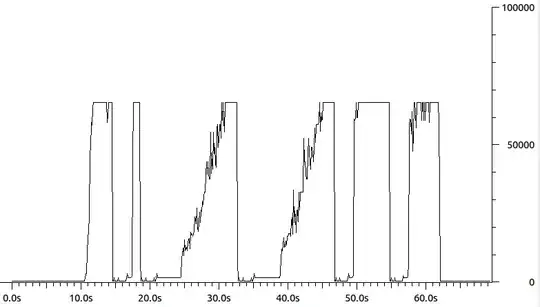
Anyone know what might cause the Sender to think there is a 64k MTU? Maybe some /proc, ethtool or ifconfig parameter? (ifconfig shows the MTU is 1500). My best guess right now is some sort of hardware acceleration -- but I am not sure what specifically.
Subedit 2-2 IV:
Just had a thought, since these 64k packets have the DF bit set, maybe my provider is fragmenting them anyways, and messing up MSS auto discovery! Or perhaps our firewall is misconfigured...
Adjunct Edit 9.73.4 20-60:
The reason I am seeing the 64k packets is because segment offloading (tso and gso, see ethtool -K) are on. After turning those off, I am seeing no improvements in the speed of transfers. The shape changes a little and the retransmits are in smaller segments: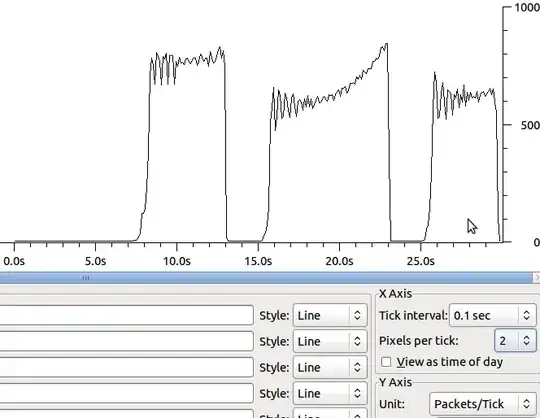
I have also tried all the different congestion algorithms on Linux with no improvement. My NY provider tried uploading files to a test ftp server in OR from the facility we are in and is getting 3x the speed.
The requested MTR report from NY to OR:
root@ny-rt01:~# mtr haproxy2.stackoverflow.com -i.05 -s 1400 -c 500 -r
HOST: ny-rt01.ny.stackoverflow.co Loss% Snt Last Avg Best Wrst StDev
1. stackoverflow-nyc-gw.peer1.n 0.0% 500 0.6 0.6 0.5 18.1 0.9
2. gig4-0.nyc-gsr-d.peer1.net 0.0% 500 0.6 0.6 0.5 14.8 0.8
3. 10ge.xe-0-0-0.nyc-telx-dis-1 0.0% 500 0.7 3.5 0.5 99.7 11.3
4. nyiix.he.net 0.0% 500 8.5 3.5 0.7 20.8 3.9
5. 10gigabitethernet1-1.core1.n 0.0% 500 2.3 3.5 0.8 23.5 3.8
6. 10gigabitethernet8-3.core1.c 0.0% 500 20.1 22.4 20.1 37.5 3.6
7. 10gigabitethernet3-2.core1.d 0.2% 500 72.2 72.5 72.1 84.4 1.5
8. 10gigabitethernet3-4.core1.s 0.2% 500 72.2 72.6 72.1 92.3 1.9
9. 10gigabitethernet1-2.core1.p 0.4% 500 76.2 78.5 76.0 100.2 3.6
10. peak-internet-llc.gigabiteth 0.4% 500 76.3 77.1 76.1 118.0 3.6
11. ge-0-0-2-cvo-br1.peak.org 0.4% 500 79.5 80.4 79.0 122.9 3.6
12. ge-1-0-0-cvo-core2.peak.org 0.4% 500 83.2 82.7 79.8 104.1 3.2
13. vlan5-cvo-colo2.peak.org 0.4% 500 82.3 81.7 79.8 106.2 2.9
14. peak-colo-196-222.peak.org 0.4% 499 80.1 81.0 79.7 117.6 3.3